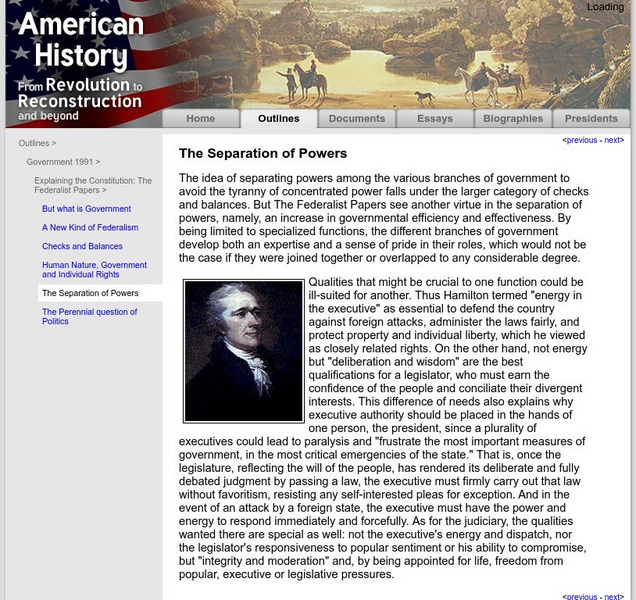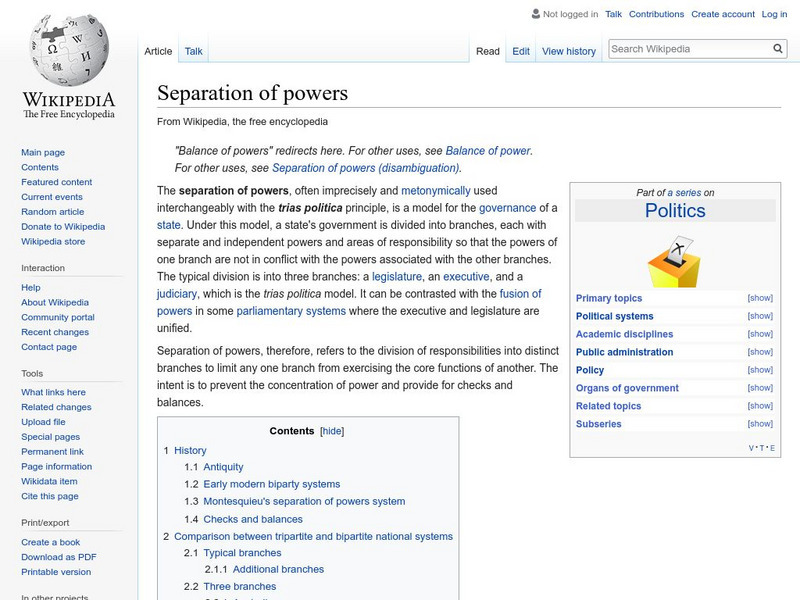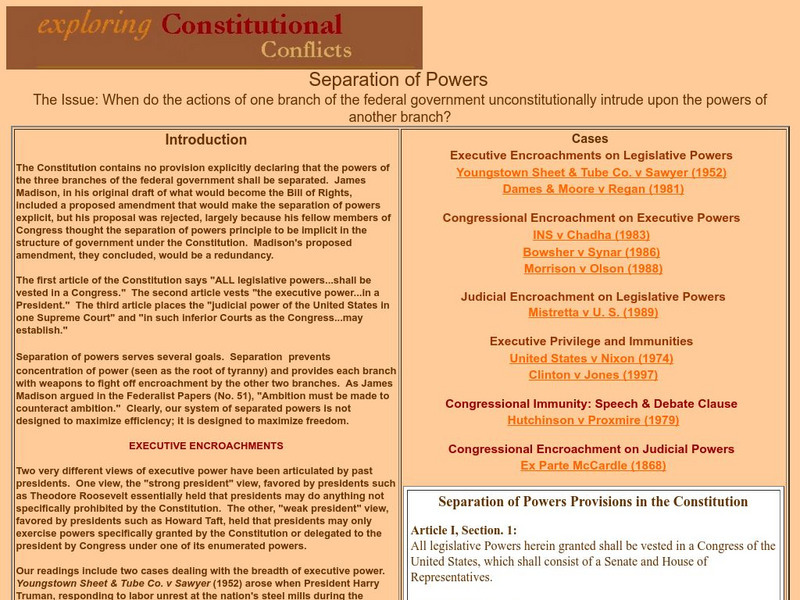Hi, what do you want to do?
Curated OER
Water Magicians
First graders observe water changing states from a solid to a liquid to a gas. They predict what they think happen to ice cubes as they sit out. They paint water with paintbrushes outside the classroom in the sun and watch the water...
Curated OER
What Would They Have Said? A Role Playing and Interview Activity
Students study Canadian constitutional documents and historical figures. They play an historical figure in an interview. Students answer questions about the events and documents in which they played a role.
Curated OER
Rafe's Classroom Secrets
Students consider Rafe's classroom secrets and teaching methods.
Curated OER
Ohm's Law, Watt's Law and Solving Formulas.
Students, in groups, connect a 10 ohm resistor across their 1.5 volt battery, and take voltage readings every 5 minutes.
Curated OER
Coal and the Environment
Students read about how burning coal affects the environment. After students finish reading about how burning coal affects the environment they have a group discussion to discuss what they thought about the information.
Curated OER
Vivid Words
In this descriptive words worksheet, students read the vivid words and their definitions in the word box. Students then write a word from the word box that correctly completes each sentence.
US National Archives
Docs Teach: Separation of Powers or Shared Powers
In this activity, students will analyze documents that illustrate the relationship between the legislative, executive and judicial branches. Using the scale in Weighing the Evidence, students will decide whether the United States...
University of Groningen
American History: Outlines: The Separation of Powers
Informative discussion of the ideas behind the Constitutional principle of Separation of Powers.
University of Chicago
The Founders' Constitution: Separation of Powers
Federal Convention on the Separation of Powers as recorded during debate at the convention, June 2, 1787.
Wikimedia
Wikipedia: Separation of Powers
Discusses what separation of powers is, what it looked like in the past, and how it is interpreted in countries around the world and in the United States.
iCivics
I Civics: Separation of Powers: What's for Lunch?
Students find out how the three branches of government interact with each other and how decisions about laws are made by several parts of the U.S. government.
University of Missouri
Exploring Constitutional Conflicts: Separation of Powers
When do the actions of one branch of the federal government unconstitutionally intrude upon the powers of another branch? This article surveys the history of this question in historic Supreme Court cases.
Tom Richey
Tom Richey: Constitutional Underpinnings of u.s. Government
The first unit of an online course on AP US Government and Politics. It explores key concepts of American government, including constitutional government, republicanism, separation of powers, checks and balances, federalism, construction...
American Bar Association
American Bar Assoc.: Separation of Powers, Connecting the Separate Powers [Pdf]
This lesson involves role-playing to help the students understand the separation of powers. [PDF]
iCivics
I Civics: Games: Branches of Power
Interactive and educational game puts players in control of all three branches of government and tests their abilities to turn issues of concern into full-fledged laws.
TED Talks
Ted: Ted Ed: How Is Power Divided in the United States Government?
Video accompanied by questions for students that looks at how the concept of separation of powers embedded in the Constitution is applied in the United States government. [3:50]
Other
Usa Gov: Three Branches of Government
Lesson plans for students to learn about the three branches of government. They can find information about the origins of the Constitution, separation of powers, and details about each of the three branches.
Harry S. Truman Library and Museum
Harry S. Truman Library & Museum: Three Branches of Government
Interactive teaching unit for Grades 5-8 that helps to explain the three branches of government and the the balance of power. Topics covered include balance of government, how a bill becomes a law, the amendment process, the Legislative...
C3 Teachers
C3 Teachers: u.s. History Module: Did Founders Want Government to Work? [Pdf]
A comprehensive learning module on the system of government established by the founders that includes three supporting questions accompanied by formative tasks and primary source materials, followed by a summative performance task....
US National Archives
National Archives: Teaching Six Big Ideas in the Constitution
The Constitution can be broken down into 6 main themes: Limited Government, Federalism, Republicanism, Separation of Powers, Checks and Balances, and Popular Sovereignty. Students will study background on the Founding Fathers and use...
ClassFlow
Class Flow: Constitution
[Free Registration/Login Required] This flipchart is an in depth Activote questionnaire relating to our Constitution. Students should understand the basic concepts of the Constitution, checks and balances, separation of powers, and...
National Humanities Center
National Humanities Center: Toolbox Library: Separation and Power, Making of African American Identity: V. 3
An essay that examines the relationship between racial separation and power. In this essay Stokely Carmichael advocates for the coalescence of political and economic power within the black community in a way that liberates and insulates...
PBS
Pbs: How the Supreme Court Affects the Lives of Teens (Lesson Plan)
Objectives for this instructional activity include describing the structure and function of the Supreme Court, looking at important decisions, and discussing recent rulings and issues.
Utah Education Network
Uen: Themepark: Liberty: Three Branches of Government
Find a large collection of internet resources organized around the three branches of government. Links to places to go, people to see, things to do, teacher resources, and bibliographies.
Other popular searches
- Separation of Powers Game
- Civics Separation of Powers
- The Separation of Powers
- 6th Grade Separation of Powers






















